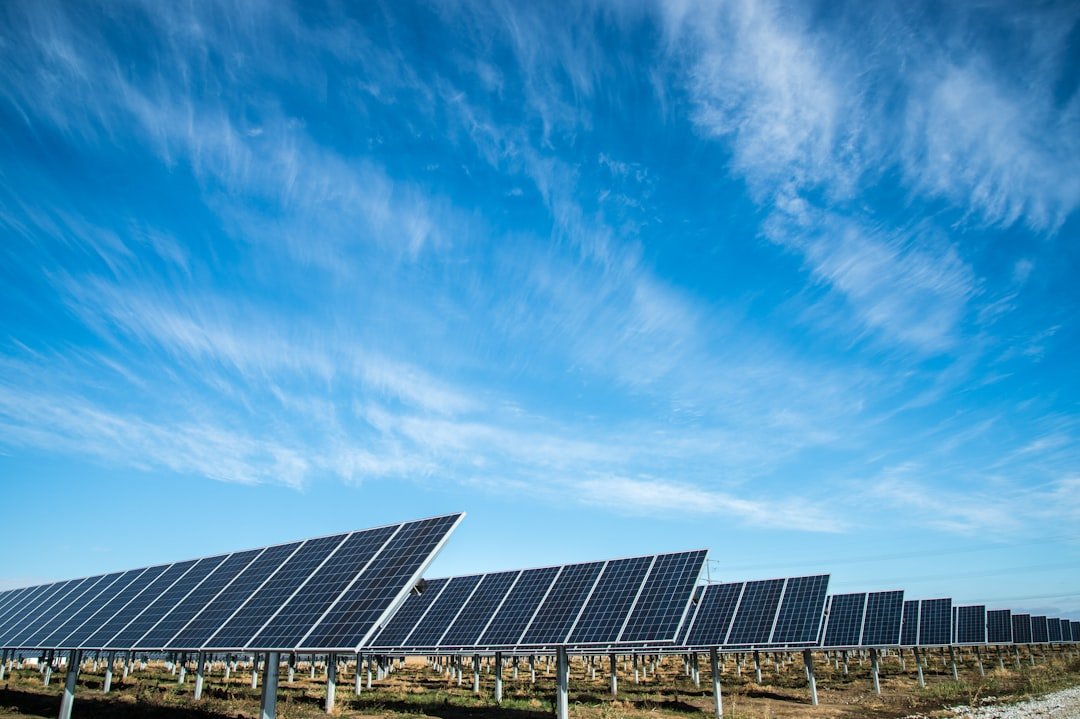Comprehending Greenhouse Gas Emissions GHGs are an essential part of the story being told about global warming. The greenhouse effect is caused by these gases, which trap heat in the Earth’s atmosphere & include carbon dioxide (CO2), methane (CH4), nitrous oxide (N2O), and fluorinated gases. Although this process is necessary to keep the planet’s temperature stable, human activity has greatly raised the concentration of these gases, leading to unfavorable climatic changes. Land-use changes, industrial operations, agricultural practices, and the burning of fossil fuels for energy are the main causes of greenhouse gas emissions.
Key Takeaways
- Greenhouse gas emissions are gases that trap heat in the atmosphere, leading to global warming and climate change.
- Greenhouse gas emissions contribute to air and water pollution, deforestation, and the loss of biodiversity.
- Strategies for reducing greenhouse gas emissions include increasing energy efficiency, transitioning to renewable energy sources, and promoting sustainable transportation.
- Renewable energy sources such as solar, wind, and hydro power can help reduce greenhouse gas emissions by providing clean and sustainable energy.
- Sustainable transportation options such as public transit, biking, and electric vehicles can help reduce greenhouse gas emissions and improve air quality.
One major source of CO2 emissions, for example, is the burning of coal, oil, and natural gas for heat and power. GHG emissions are frequently measured in terms of carbon dioxide equivalents (CO2e), which enables a consistent comparison of the contributions of various gases to global warming. Despite having a shorter atmospheric lifetime than CO2, methane, for instance, is a powerful contributor to climate change because it traps heat more than 25 times as effectively over a 100-year period.
Creating efficient plans to lessen the effects of greenhouse gases requires an understanding of their types and sources. The Intergovernmental Panel on Climate Change (IPCC) offers thorough evaluations of greenhouse gas emissions, emphasizing patterns and forecasts that guide international climate policy. The Environmental Effects of Greenhouse Gas Emissions Growing greenhouse gas emissions have significant and varied environmental effects. Global warming, which has been connected to extreme weather phenomena like hurricanes, droughts, and floods, is one of the most obvious consequences. Scientists attribute the recent increase in hurricane frequency and intensity in the Atlantic to warmer ocean temperatures brought on by climate change.
Also, as polar ice caps & glaciers melt due to rising temperatures, sea levels rise and endanger coastal communities around the world. In addition to raising temperatures, greenhouse gas emissions damage biodiversity & ecosystems. Many species’ habitats and migration routes may change as a result of altered weather patterns, which may cause inconsistencies in food availability and breeding cycles.
| Metrics | 2010 | 2020 | 2030 |
|---|---|---|---|
| Total GHG Emissions (GtCO2e) | 50 | 55 | 40 |
| Renewable Energy Use (%) | 15 | 25 | 40 |
| Energy Efficiency Improvement (%) | 10 | 20 | 30 |
| Carbon Capture and Storage (MtCO2) | 0 | 5 | 15 |
Because coral reefs are extremely sensitive to temperature fluctuations, rising water temperatures cause bleaching events, which significantly reduce marine biodiversity. Also, shellfish and other marine creatures that depend on calcium carbonate for their shells may suffer from ocean acidification brought on by rising CO2 levels. These environmental effects are interconnected, which emphasizes how urgent it is to address greenhouse gas emissions in their entirety. Strategies for Reducing Greenhouse Gas Emissions A multifaceted approach is necessary to counteract the growing threat posed by greenhouse gas emissions. Improving energy efficiency in a variety of sectors is one successful tactic.
Energy consumption and related emissions can be considerably decreased, for example, by retrofitting buildings with improved insulation and energy-efficient appliances. GHG emissions can be significantly decreased by integrating energy-efficient technologies into industrial processes. In line with the U. S. .
According to the Department of Energy, by 2030, energy consumption could be lowered by up to 30% just by increasing building energy efficiency. A crucial tactic is switching to low-carbon energy sources. This entails raising the proportion of renewable energy sources, such as hydroelectric, wind, & solar, in the energy mix. To replace fossil fuels, both the public and private sectors are making significant investments in renewable technologies.
Denmark, for instance, has made impressive progress in producing wind energy, with wind turbines providing more than 40% of their electricity. Also, encouraging non-motorized and public transportation alternatives can lessen urban areas’ dependency on fossil fuels. Another way to reduce GHG emissions is to put policies in place that support the use of electric vehicles, bike infrastructure, and carpooling.
The Contribution of Renewable Energy to Greenhouse Gas Emission Reduction: By offering cleaner substitutes for fossil fuels, renewable energy is essential to reducing greenhouse gas emissions. One of the renewable energy sources with the quickest rate of growth in the world is solar power. Solar photovoltaic (PV) systems are now a financially feasible choice for both residential & commercial applications due to their dramatic price reduction over the last ten years. Leading the way in the adoption of solar energy are nations like China and Germany, which have greatly reduced their carbon footprints & encouraged energy independence.
Another essential component of the renewable energy industry is wind energy. Utilizing the natural wind currents, both onshore and offshore wind farms produce electricity while avoiding greenhouse gas emissions. By 2020, wind power capacity will have surpassed 743 gigawatts globally, according to the Global Wind Energy Council, greatly reducing emissions in many nations. Also, the ability to store excess energy produced during periods of peak production is improving the dependability of renewable energy sources thanks to developments in battery storage technology.
This feature tackles the intermittent nature of renewable energy, which is one of its main problems. Sustainability in Transportation The transportation sector is one of the biggest contributors to greenhouse gas emissions, and sustainable transportation is essential to lowering these emissions. The transportation sector is responsible for about 14% of the world’s greenhouse gas emissions, mostly from gasoline and diesel-powered road vehicles.
Making the switch to environmentally friendly modes of transportation can greatly reduce these emissions. As a greener substitute for conventional internal combustion engine vehicles, electric vehicles (EVs) are leading this shift. It is anticipated that EV adoption will increase significantly as battery technology advances and charging infrastructure grows. By offering effective substitutes for single-occupancy vehicles, public transportation systems also significantly contribute to the reduction of emissions.
Cities can reduce overall emissions per capita and traffic congestion by investing in strong public transportation systems, such as light rail, buses, and subways. For example, major public transportation systems have been successfully incorporated into cities like Tokyo & Amsterdam, which not only lessen dependency on private automobiles but also encourage cycling as a practical form of transportation. Policies that support telecommuting and car-sharing initiatives can also help reduce emissions associated with transportation. The Contribution of Land Use and Agriculture to the Reduction of Greenhouse Gas Emissions Land use & agriculture both contribute significantly to greenhouse gas emissions, but they also offer opportunities for mitigation techniques.
Agricultural activities are responsible for about 24% of the world’s greenhouse gas emissions, mostly from fertilized soils & methane released during livestock digestion. Enhancing food security and lowering these emissions are two benefits of implementing sustainable agricultural practices. Carbon sequestration can be achieved through methods like agroforestry, which involves planting trees in agricultural landscapes and offers extra advantages like increased biodiversity and soil health. Also, changes in land use, like deforestation, release stored carbon dioxide when trees are felled or burned, which raises carbon emissions considerably. Two essential tactics for reducing the effects of climate change are preserving existing forests and reclaiming degraded areas.
While encouraging sustainable land management techniques, programs like REDD+ (Reducing Emissions from Deforestation and Forest Degradation) seek to encourage developing nations to protect their forests. In addition to addressing greenhouse gas emissions, a more resilient food system can be achieved by giving sustainable agriculture & responsible land use policies top priority. The Function of Laws and Regulations Government laws and regulations play a crucial role in the endeavor to lower greenhouse gas emissions.
Through international agreements like the Paris Agreement, which seeks to keep global warming well below 2 degrees Celsius above pre-industrial levels, national governments play a critical role in establishing emission reduction targets. Establishing nationally determined contributions (NDCs) that detail their particular pledges to gradually cut emissions is encouraged. In addition to international agreements, local governments can enact laws that encourage the use of renewable energy sources and increases in energy efficiency. Tax breaks for solar panel installation or electric car subsidies, for instance, can increase consumer demand for clean technology. Also, laws imposing higher emissions requirements on automobiles and industrial operations can force companies to develop and implement greener practices.
Governments can significantly reduce greenhouse gas emissions across a range of sectors by establishing a regulatory framework that places a high priority on sustainability. Benefits of Cutting Greenhouse Gas Emissions Cutting greenhouse gas emissions has many advantages beyond lessening the effects of climate change. Cleaner air quality has several benefits, one of which is better public health outcomes. In addition to CO2, burning fossil fuels releases dangerous pollutants like sulfur dioxide (SO2), nitrogen oxides (NOx), and particulate matter (PM), all of which aggravate cardiovascular & respiratory conditions. These pollutants can be significantly reduced by switching to renewable energy sources, which will ultimately improve community health.
Also, by promoting the growth of green industries and technologies, lowering GHG emissions creates economic opportunities. The shift to a low-carbon economy generates employment in industries like sustainable agriculture, energy efficiency retrofitting, and the installation of renewable energy. Up to 24 million jobs could be created globally by 2030 as a result of the switch to renewable energy, per a report published by the International Renewable Energy Agency (IRENA). This change reduces reliance on fossil fuels and diversifies job markets, which not only addresses environmental issues but also fosters economic resilience. In conclusion, reducing greenhouse gas emissions has many social, economic, and health advantages that support a sustainable future for everybody, making it more than just an environmental necessity.




[…] of reducing greenhouse gas emissions in the fight against climate change, check out the article Reducing Greenhouse Gas Emissions: A Critical Imperative. This article delves into the urgent need for action to combat the environmental crisis we are […]